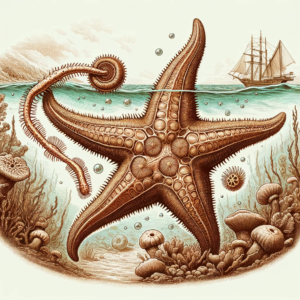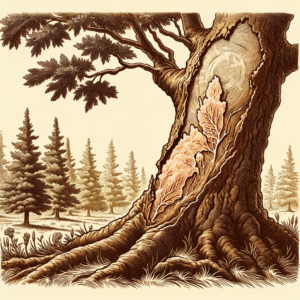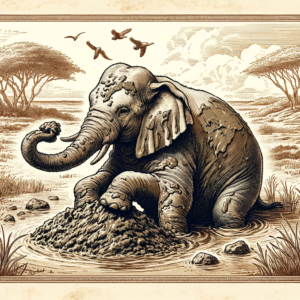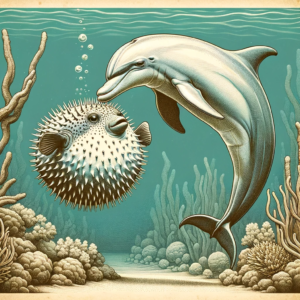Unveiling the secrets of nature’s resilience, ‘How Plants and Animals Cure Themselves’ reveals the fascinating processes through which the natural world overcomes injuries and pain.
Nature’s resilience is a marvel, with both plants and animals possessing unique abilities to heal themselves. The natural world is filled with remarkable examples of self-healing. Both plants and animals have evolved unique ways to heal their wounds and alleviate pain. This expanded article explores several intriguing examples of this phenomenon, delving into the fascinating world of nature’s resilience.
1. The Regenerative Power of Starfish

Starfish can regenerate lost limbs, a critical survival trait in marine ecosystems. If a starfish loses an arm, it can grow a new one. This process, called regeneration, is not just about replacing lost limbs. It’s a complex biological mechanism involving cell growth and wound healing. Starfish use this ability to survive and maintain their crucial role in the marine ecosystem.
2. Lizards and Tail Regrowth
Lizards, too, show remarkable regenerative abilities, especially in regrowing their tails through a process known as autotomy. This ability is not just a survival tactic but also a testament to their biological adaptability. When threatened, they can detach their tails to escape predators, a process known as autotomy, followed by regrowth. The new tail, although not identical to the original, serves essential functions for the lizard’s survival.
3. Trees and Their Wound Healing

Moving to the plant kingdom, trees are masters of healing. When a tree is injured, it forms a special type of tissue called callus. This tissue gradually covers the wound, preventing infection and further damage. Over time, the tree may completely envelop the wound, showcasing a remarkable natural recovery process.
4. The Incredible Immune System of Sharks
Sharks are known for their resilience, especially when it comes to healing wounds. They have an incredibly efficient immune system. This system helps them heal quickly and resist infections that would be detrimental to other marine species. Sharks’ wound-healing capabilities are a subject of ongoing research, with potential implications for human medicine.
3. Elephants and Their Natural Healing Techniques

Elephants, the gentle giants of the animal kingdom, also have their ways of dealing with injuries and pain. They are known to use natural remedies, like dust baths and mud, to protect wounds and soothe irritations. This behavior demonstrates an intrinsic understanding of natural healing agents.
Elephants in Kenya have been seen eating plants from the boraginaceae family to induce birth, showing a deep understanding of their natural pharmacy. Kenyan women also use this plant for the same purpose.
4. The Pain Management of Chimpanzees
Chimpanzees exhibit behavior indicating an understanding of pain management. They have been observed using certain plants and tools to treat their wounds and alleviate discomfort, a testament to their intelligence and adaptability.
Chimpanzees in Loango National Park have been observed applying insects to their wounds, a practice that extends to treating wounds of other chimpanzees.
5. Dog & Cats’ Grass Consumption
Dogs and cats are known to eat grass to relieve upset stomachs. They usually vomit or excrete the grass shortly after consumption, using it as a natural way to rid themselves of pathogens or parasites.
6. Hydras and Complete Regeneration
Hydras, small freshwater organisms, have an astonishing ability to regenerate their entire body from just a fragment of themselves. This ability is a subject of extensive scientific research, offering insights into cellular regeneration.
7. Black Bears and Osha Root
In northern New Mexico, biologist Shawn Sigstedt observed American black bears using the osha root to treat their arthritis pain. Interestingly, the region’s Indigenous people learned about the root’s healing powers from observing the bears.
8. The Self-Healing Bark of Cork Oak Trees
Cork oak trees have a remarkable self-healing bark. When the bark is harvested, it regrows without harming the tree, providing a sustainable resource while showcasing the tree’s resilience.
9. Birds’ Anting Behavior
More than 200 bird species engage in a behavior called “anting,” where they sit in anthills and move their wings in a way that covers them with formic acid. This process rids their feathers of microorganisms like fungi and bacteria.
10. Lemurs and Specialized Plant Consumption
Pregnant lemurs in Madagascar consume specific barks and leaves for health benefits. They nibble on bark and leaves from fig and tamarind trees. These plants contain components that assist with milk production, kill parasites, and increase the chances of successful childbirth.
11. Reindeer and Hallucinogenic Mushrooms
In Finland and Siberia, reindeer have been observed getting high by eating the Amanita muscaria mushroom. This practice is also linked to the traditions of the Sami people’s shamans.
12. Dolphins and Puffer Fish Toxin

Dolphins interact with puffer fish to experience a trance-like state due to the toxin released by the fish under stress, an example of animals using their environment for altered states of consciousness.
13. Zoopharmacognosy: The Science of Animal Self-Medication
The study of how animals self-medicate, known as zoopharmacognosy, underscores the importance of conserving natural habitats for both animal health and the discovery of human medicinal cures.
This field has led to the practice of applied zoopharmacognosy, bringing the concept of animal self-medication into captive and domestic environments. It opens up possibilities for new medicinal discoveries and conservation efforts.
From the regenerative abilities of starfish and lizards to the intelligent use of natural remedies by elephants and chimpanzees, and the intriguing behaviors of reindeer and dolphins, these examples highlight nature’s incredible self-healing mechanisms. They offer not just fascination but also valuable insights for advancements in medicine and healing techniques.
